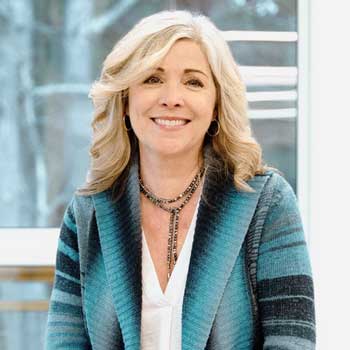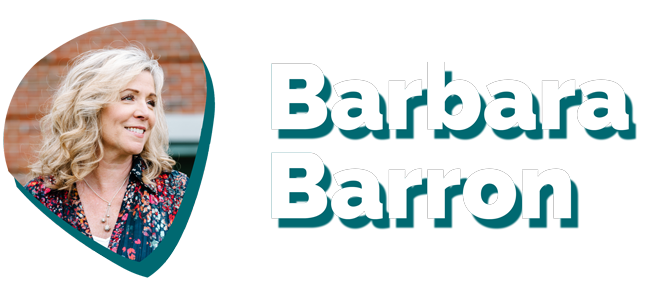by Barbara Barron | Posted January 10th, 2024 | Subscribe to this newsletter

Last fall, I wrote an article about what I see as the misplaced emphasis on participation as both a focus of the advancement team’s work and a measure of the effectiveness of the giving program.
I argued that the 100% goal is more likely a moon shot. There are always people who just won’t support our schools no matter what. That’s especially true for our alumni. We need to get off this merry-go-round and focus our attention, love, and work on those who do want to support us.
This month, I read an excellent article — Rethinking Participation Rates | CASE by Ann Synder, Senior Director, Communities Engagement at CASE.
In it, she clarifies that participation percentages are merely “indicative” measures. She encourages us to instead look to more “predictive” measures that tell us far more about how we’re doing and if we are likely to meet or exceed our annual goals. I will paraphrase them here.
First: a mind-blowing fact she provided was that…
…according to the 2023 CASE survey of independent schools, only 60% of parents and 20% of alumni support annual giving programs.
I bet that is going to make many of my readers happy! My client schools typically land in the 75-90% range. A few hit 100%. The alumni stat may depress some of you. (Though I doubt it will surprise you.)
Here are questions to get at more predictive measures:
1. What’s your progress towards your goal? How are you doing at mid-year?
This may seem obvious, but I see programs that are not entirely sure where they are at any point in time.
Instead, adopt a practice of using a dashboard to track where you are against the previous year and where you are towards your current goal. If by the time you attend the annual CASE-NAIS conference (typically held in late January – this year in Austin!), you ought to be closing in on your own.
I always tried to get there by winter break (or after the mail was sorted in those first days back in January.) Reaching your goal early is not only a strong indicator of a successful program but it makes it possible for you and your team to focus your efforts on other programs or events in the winter and spring.
Ann reminds us that families are never as keen, as positive, or as excited about school as they are in those first months in the fall. Sure, we get a bit of a bump during the festivities at the end of the year but don’t wait for that wave to lift and carry you to shore. Instead:
· Use the summer to research new families.
· Make thoughtful cultivation assignments to Board members.
· Be sure every new family is assigned to a professional in the advancement department to get to know them and solicit them personally.
Have you subscribed to this newsletter yet? It only takes a minute.
2. How are your leadership giving levels set?
I ask this in every appraisal I conduct. And I am often asked this by Heads of School. The answer differs widely based on the size and age of your school, the level of affluence, etc. But Ann offers this helpful formula:
Since philanthropy tends to provide around 10% of operating funds, start your leadership giving level at 10% of tuition. You may need to massage that a bit for your school. If you already have a healthy giving level of $25,000 or more, don’t move it back. But if you are struggling to set a good leadership level, try it. It has the added advantage of being clear and easy to explain: 10% of tuition contributes significantly to the school’s bottom line. Many donors will appreciate that clarity of impact.
3. What percentage of new families are actively assigned to someone in the advancement department to cultivate?
This one is especially painful for the small shop people out there. And in particular to all of you hard-working solo practitioners. But simply bringing this best practice to your Head and to the advancement committee may have some effect. No, you may not suddenly be granted another FTE but it may help bolster your argument for more active cultivation and stewardship help from Board members.
Those with larger teams can still take this to heart. I believe that every gift officer, regardless of title, should be actively fundraising. The ROI of the department simply makes no sense if that’s not happening. Directors: make those assignments thoughtfully so your team members are successful, and your donor families feel cared for. Discuss this in your team meetings. Celebrate the securing of new and increased gifts. Center this work and see great results.
4. What percentage of your annual fund is given by your 3 largest donors? And therefore, what’s happening with your pipeline?
Ann’s stat, once again, made me sit up straight:
In the 2022 DASL data, reporting schools said that 43% of their support came from their top three families.
Yikes! I have written about the risk of relying too heavily on angel donors. This clear and current data should compel us to work hard to continue to earn and thank those supporters. But it should also cause us to double down on showing them that we are building out a pipeline of supporters that will join them in their generosity.
How? Well…
· Study your lists. Who might be a prospect to increase their giving?
· What does your stewardship of those mid-level donors look like? Are you telling stories about how their gifts are making a difference daily?
· How are you raising the giving sights through interesting initiatives or a budding major gifts program?
Finally, and this pertains to all four of Ann’s points, take this article and hers to your advancement committee. The proper and thoughtful setting of annual goals is vitally important. Your ability to influence that process by educating decision-makers at your school and engaging with them in meaningful conversations about what is really going on might mean the difference between another tough slog next year or a smarter way of working that leads to healthy returns.
As always, thanks for everything you’re doing.

Barbara Barron
[email protected]
Share this post:

BARBARA BARRON is one of the most respected and highly sought-after independent advancement professionals in the country, having worked with dozens of schools in every corner of the United States.
She has raised over $20 million for schools where she served as the Director of Development. Barbara is a New York Times bestselling author, speaker, and presenter who currently advises dozens of schools in various capacities. She is considered a thought leader in the world of advancement, with her writing widely shared by professionals in development offices worldwide.
More Advancement Articles






